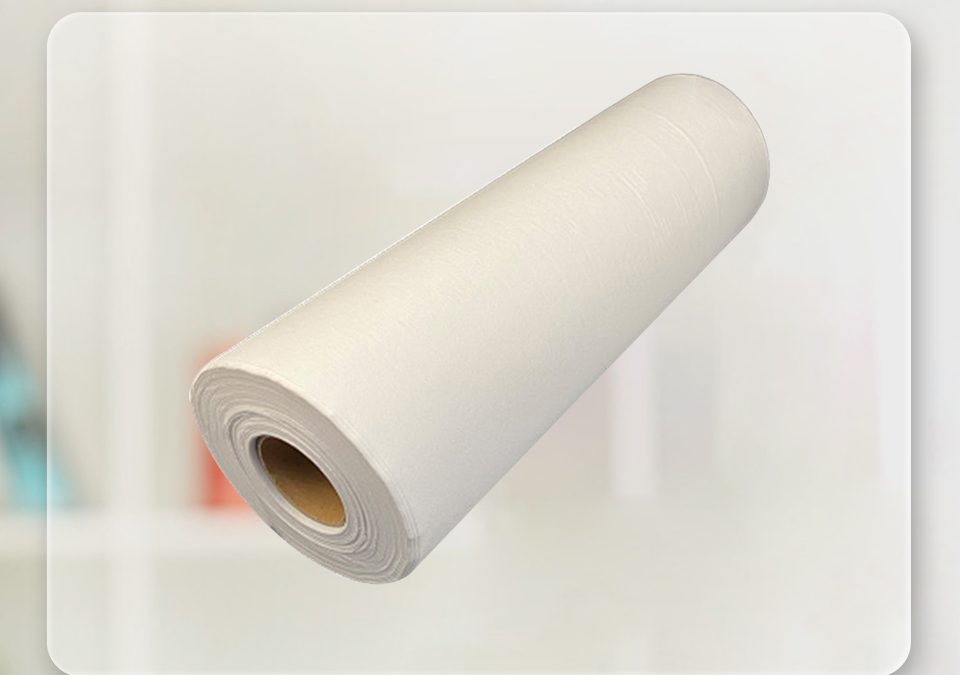
How to start your embroidery business?
2022-07-04
How to choose your first embroidery machine ?
2022-08-18Tips for the use of embroidery stabilizers
Have you ever studied the precautions for embroidery stabilizers?
As we all know, embroidery stabilizers is an indispensable accessory when we embroider. The role of the embroidery stabilizers is to hold the embroidery, prevent the embroidery from wrinkling and prevent the stitches from sinking. Of course, if the fabric of the embroidery is thick enough, then the embroidery backing can be omitted. For example, when embroidering denim, the embroidery stabilizers can be omitted.
Logically speaking, embroidery stabilizers can be divided into two types: bottom and top.
The bottom is a layer of material laid under the cloth, which can make the cloth more stable, stabilize the stitch and improve the smoothness of embroidery.
The top is the material laid on the cloth to prevent the embroidery thread from falling into the cloth or being entangled. When embroidering special fabrics, such as terry cloth, velvet, blanket or velvet, because their surfaces are full of long hair, it is easy to flex the lines between the wool. At this time, a layer of embroidery stabilizer can be added to prevent the embroidered thread from being entangled.
In terms of material, embroidery stabilizers can be divided into many types, the most common types are: paper stabilizers, hot-melt embroidery stabilizers, water-soluble stabilizers. Different embroidery stabilizers are suitable for different embroidery occasions.
Paper stabilizers
Paper stabilizer is the most widely used, as well as the most convenient. After finishing the embroidery, tear off the excess lining paper by hand. Note that the paper lining should be cleaned up in time after embroidery, otherwise it will be difficult to remove the excess lining paper after the fragile paper is soft.
Hot-melt stabilizers
The hot-melt stabilizer looks a bit like plastic film and a bit like paper. One side of it is smooth, and the other side is pockmarked with concave and convex points. Usually, the hot-melt stabilizer is colorless and slightly transparent. There are also hot-melt stabilizer with common colors on the market. The hot-melt stabilizer can be distinguished according to the thickness. When embroidering with ordinary cotton cloth, the hot-melt stabilizer of 1.0mm specification can be selected.
Hot melt stabilizer is easy to clean, especially cheap, feels better, and is suitable for most fabrics, so it is widely used in the market. Especially when embroidering on towels, velvet, wool fabrics or other immersed fabrics, hot-melt stabilizer is often used.
After the embroidery is completed, the hot-melt stabilizer at the bottom can be removed by scalding. Pay attention to clean the thread ends before scalding, otherwise staining will occur.
Water-soluble stabilizers
Water-soluble stabilizer is also like both plastic film and paper. Its color is usually colorless and slightly transparent. Dissolving the lining paper with water can make the embroidery feel soft as a whole. Its specifications and uses are very similar to hot-melt stabilizers.
Water-soluble stabilizer is divided into normal temperature water soluble stabilizers and high temperature water soluble stabilizers , which can meet different embroidery needs. Normal temperature water-soluble stabilizer can be dissolved in water at normal temperature, but it is easy to get damp. High temperature stabilizer is similar to normal temperature water-soluble stabilizer, but it needs to be soaked in warm water to dissolve, which has strong stability.
In addition to considering the cost factor, the key point of choosing normal temperature water-soluble or high temperature water-soluble stabilizers is the heat resistance of the embroidered material. The embroidered material with large shrinkage in hot water and difficult to ensure color fastness adopts normal temperature water-soluble stabilizers. For example, cotton lace is dissolved in hot water, while cotton clothing pieces or ready-made clothes are dissolved in water at room temperature. Among the three types of stabilizers , water-soluble stabilizer is the most expensive.
Water soluble stabilizer is also divided into several specifications in thickness. Generally speaking, it is better to use thick embroidered stabilizers for tighter patterns, and thin embroidered stabilizers for loose patterns.
After the embroidery is completed, when cleaning the excess backing paper, the water-soluble stabilizers should be completely dissolved and degummed. Generally, the water-soluble time and temperature should be determined according to the operation manual of water-soluble stabilizers and the actual production. The user should obtain the exact parameters before use. After dissolving in water, the water should be clean, otherwise the residual glue liquid will harden the embroidered material after drying. Although softener can be added, not any embroidered material can be added, and it will also increase the embroidery cost.
Well, this is the end of today's sharing about embroidery stabilizers. We will continue to share embroidery knowledge with you in the next blog. And, you can also check related information on our YouTube Channel: BAI Embroidery Machine
-1.png)

